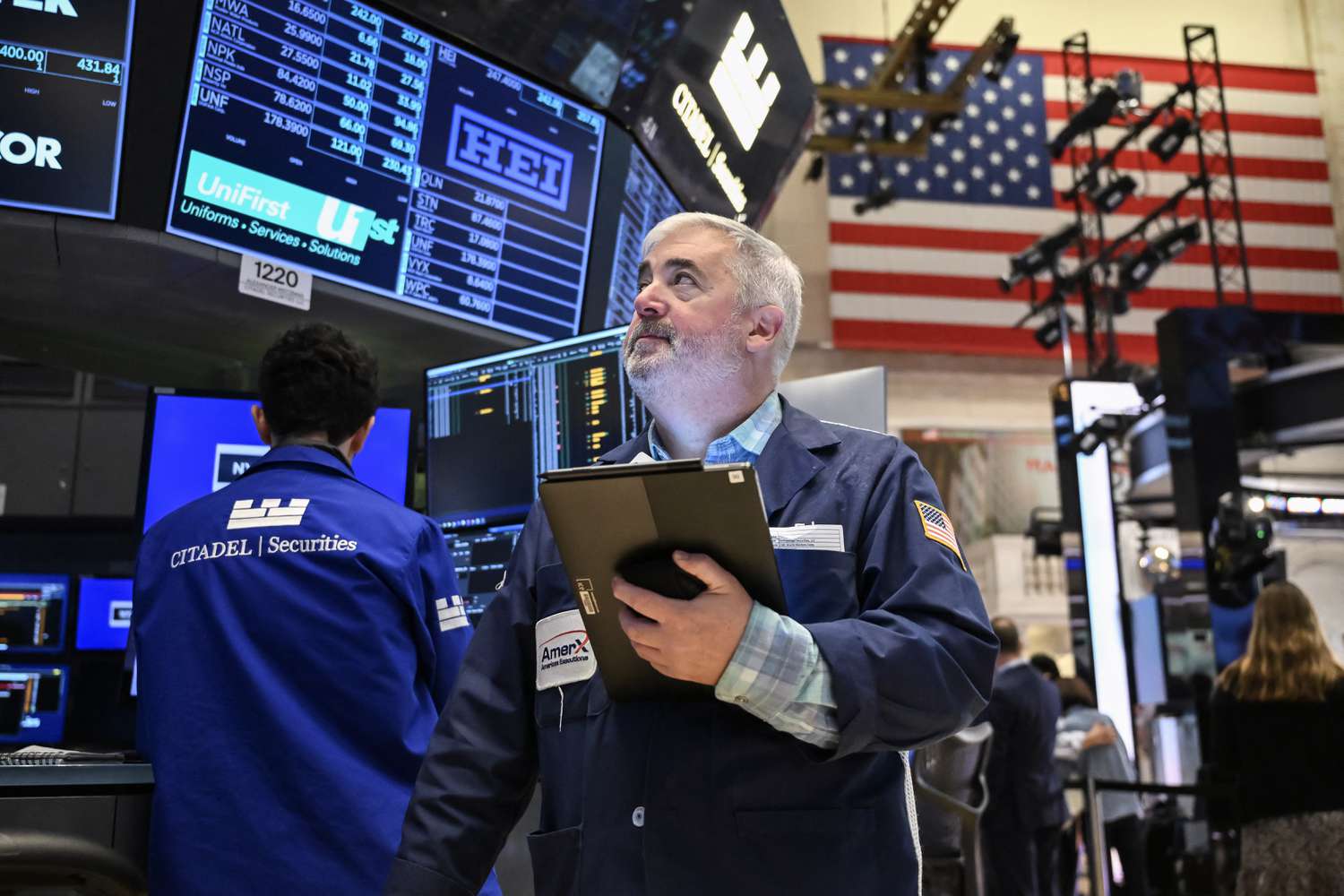The economy is at a tipping point right now. It’s shifting faster and deeper than most investors realize.
Take the situation with tariffs, for example. Whether you’re a fan of President Trump or not, I think we can all agree that the rollout of the tariffs was quite a whirlwind. Things are moving fast, and for many, it’s starting to feel chaotic.
That’s why this week’s reports on GDP, inflation and jobs were so important. They offer the first real clues about what’s brewing beneath the surface.
But I’m here to tell you that a far bigger story is unfolding behind the scenes. And in just a moment, I’ll show you exactly what’s unfolding, and more importantly, what you can do about it.
But first, let’s discuss this week’s important economic data.
The GDP Report’s Hidden Strength
Let’s start with Thursday morning’s gross domestic product report.
At first glance, the headline number looked disappointing. GDP declined at an annualized rate of 0.3% in the first quarter – slightly worse than the 0.2% drop economists expected.
But if you dig a little deeper, the picture is a lot more encouraging.
The decline was largely the result of a 41.3% surge in imports ahead of the new tariff deadlines. That surge alone knocked 4.8% off the GDP number. Essentially, countries and businesses alike were trying to get their goods in before the tariffs hit – and that created a drag on the numbers that doesn’t reflect the true health of the economy.
If you back that out, growth was actually positive. So, the signs of recession aren’t there, folks.
The Fed’s Favorite Inflation Gauge
Next up is the latest look at inflation – the Personal Consumption Expenditures (PCE) index.
Remember, the core component of this report is the Federal Reserve’s preferred inflation gauge. So, it’s worth watching closely.
In March, the headline PCE index was flat month-over-month. That brings the annual rate down to 2.3% – the lowest since last fall. Core PCE, which excludes food and energy prices, also remained flat for the month, with the annual rate falling to 2.6% from 3.0% in February.
Now, economists anticipated a 0.1% monthly increase for both headline and core PCE, with annual rates holding steady or ticking higher. So, this is really encouraging, folks. However, these figures came before the implementation of the tariffs in April.
Jobs Report: Not the “Bad” News I Wanted…
Now let’s turn to the labor market.
The jobs report was released this morning, and to be honest, I was a little disappointed with it.
The U.S. economy added 175,000 jobs in April – beating estimates for 138,000. The unemployment rate held steady at 4.2%. But I was actually hoping for a weaker headline number, because that would help bolster the case for key interest rate cuts.
Specifically, I wanted to see the impact of all the job cuts coming from the Department of Government Efficiency (DOGE). Unfortunately, that didn’t show up. The report only showed a decline of 9,000 federal workers. Whether that’s because of lagging severance packages or something else, the DOGE cuts just didn’t hit the numbers the way I expected.
There were, however, downward revisions to previous months. February and March job gains were revised lower by a combined 58,000. And while payrolls came in hotter than expected, wage growth was soft – average hourly earnings rose just six cents in April.
Sometimes, bad news is good news. And while we didn’t quite get the “bad news” I was hoping for, the reality is the cracks are starting to show.
The Case for Rate Cuts Is Growing
So, the big question is whether these reports will be enough to push the Fed toward cutting rates? That remains to be seen.
On balance, I think the slowing revisions and wage growth in the jobs report help build the case.
And while the PCE report was very encouraging, the issue here is that this data is before the tariffs hit. The Fed is worried that the tariffs could lead to price increases in the coming months. The reality is that the deflationary signs are building, and our dollar is incredibly strong.
So frankly, I think the Fed is being overly cautious here. If I were Fed Chair Jerome Powell, I’d go ahead and cut now.
In fact, I’m predicting four rate cuts this year. That’s more than most economists are calling for, but it lines up with what we’re seeing in the bond market.
In fact, in a recent appearance on Fox Business, Treasury Secretary Scott Bessent pointed out that the two-year Treasury yield (now at about 3.8%) is far below the current federal funds target rate range of 4.25% to 4.50%.
That’s a clear signal the Fed is behind the curve – and that multiple rate cuts may be needed just to catch up to market expectations.
Now, the 10-year Treasury yield has perked up a bit recently. It’s at about 4.3% right now. But the European Central Bank has already cut interest rates seven times since June 2024, bringing its benchmark rate down to 2.25%. And markets are expecting as many as three additional cuts in 2025, starting in June.
So, I expect our Treasury yields to continue meandering lower as global rates decline. Soon, they’ll be well below the federal funds rate, and the Fed be out of sync with the broader market. Then, it will have to cut.
Closing Thoughts
When that happens, it could be just the rocket fuel the market needs.
The fact is, I expect positive trade developments, upcoming key interest rate cuts and strong quarterly results should serve as the powerful “one-two-three” punch that propels fundamentally superior stocks much higher.
But I should add that one thing is clear amid all of the uncertainty right now, folks.
The market is adjusting to a new reality.
The fact is, we are in a period of dramatic upheaval, and it’s only getting started.
And it’s all thanks to what I’m calling the Economic Singularity.
This isn’t just another market cycle or recession. It’s a fundamental restructuring of how wealth is created, how work is valued and who gets left behind.
Make no mistake: This could either cost you dearly or make you significantly wealthier.
That’s why I’ve broken my silence and filmed a special video to explain what’s happening.
I want you to have a clear-eyed understanding of what’s really driving these changes happening behind the scenes. That way, you can prepare for what’s next and learn exactly how to protect yourself – and profit – from these unprecedented economic changes.
To discover the precise strategies and specific stocks that are already thriving amid this turmoil, I urge you to watch my new presentation now.
The sooner you understand what’s really unfolding – and position yourself accordingly – the better off you’ll be when this shift accelerates.
Sincerely,
Louis Navellier


















